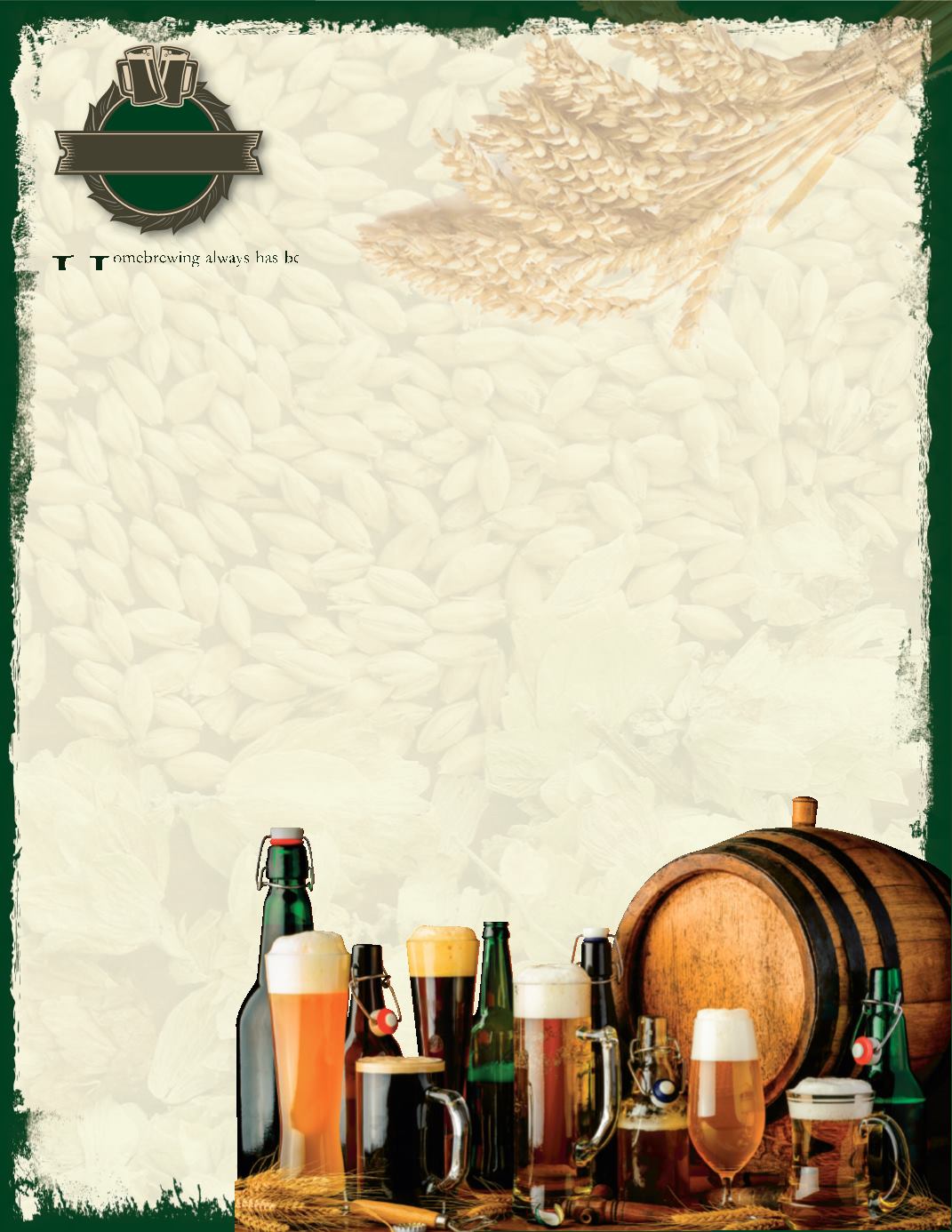
7
H
omebrewing always has been
an integral part of the family
history of
Jeff Meise
(Tool
Room). As a child, Jeff often heard
stories fromhis dad about howhis late
grandfather made his own beer, wine
andwhiskey.
“My father kept a few of those
recipes alive but often tried to put
his own personal spin on them,” Jeff
told
PlastiScope21
. “I have plenty of
memories of those batches, including
the time that an abundance of yeast
caused the bottles to spontaneously
explode. Luckily, my friends and I
were able to pilfer a couple of those
over-primed beers and get them down
before the catastrophe.”
In 2003, Jeff saw an ad for Brew-
masters, a new brewing supply store
in Sheboygan Falls, and decided to
investigate. “When Iwent in to check it
out, I ended up leaving with the basic
equipment tomake a batch of beer, as
well as 24 flip-lid liter bottles.
I chose liter bottles as I
figured it would be quicker
and easier than washing
out two dozen 12-ounce
bottles every time I brewed
a batch,” he said.
Jeff’s first attemptwas a
Cooper’s Australian Ale,
a concentrate that only
requiredwater, sugar and
yeast. “It is amber ale
with a 5 percent alcohol
content,” he explained.
“In addition to the convenience of the
method, the concentrate was the least
expensive of all the options available. I
figured it was a goodplace to start.
“My first batch turned out to be a
success, so Iwent back tobuymore of
the concentrate, as well as a fewmore
liter bottles,” Jeff said. “That was over
11 years ago and I am still making the
samebeer today. I’ve also experimented
withother concentrates and somemore
involved kits with raw grains, but the
process of brewing with the grains
demandedover twohours of non-stop
work, compared to 15minutes for the
concentrate that I had been using
prior.” The time commitment, plus
increased cost, convinced him to go
back to the concentrate.
“A batch of beer yields me five
gallons, or about two casesof beer,”he
said. “Considering that I can fill 19 liter
bottles for less than $20, it’smore than
worth the effort tobrew it.However, it
is worth noting that keeping them full
is still a challenge. Based on my
estimates, betweenme, my family and
my friends, over 1,000 gallons of my
homebrew have been consumed (over
11 years). Seeing as it takes me about
an hour and a half to sanitize my
equipment, brew and bottle the beer,
at five gallons a batch, that equates to
roughly 300 total hours that I have
spent brewing.”
Although he admits to a passion for
homebrewing, Jeff said, “Nothingbeats
the time spent consuming the fruits of
my laborwith friends and family. Inmy
free time, I enjoy touring breweries,
wineries anddistilleries spread through-
out the nation.”
This summer, Jeff and his wife
Debbie followed the Kentucky Bour-
bonTrail, alongwhich eight prominent
distilleries are located. “In the future, I
would like to trymakingmy ownwine,
but Idon’t think that Iwill ever attempt
to distill. After seeing the labor-inten-
sive process that goes into every bottle
of whiskey, I’ve decided that I’ll leave
that to the masters,”
Jeff conceded.
The
Family
Meise
ThreeGenerationofHome
Brewers In JeffMeise’sFamily


